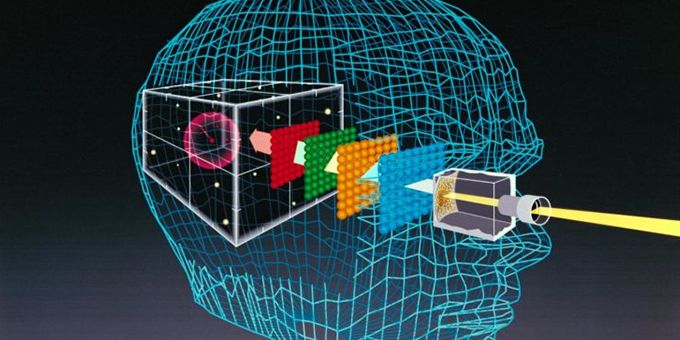How to choose the right vendor for robotic vision
Checking out the Role of an Optical Fibre Diameter Analyser in Ensuring Item High Quality
The function of an optical fibre diameter analyser is critical in maintaining product quality within the telecom sector. These gadgets measure fibre diameter with accuracy, making sure consistency and performance. Variations in diameter can lead to significant signal loss, influencing interaction reliability. As manufacturers purpose for excellence, understanding the systems behind these analysers comes to be crucial. What improvements lie in advance in this field, and just how will they shape the future of optical fibre manufacturing?
Understanding Optical Fibre Diameter Dimension
Measuring the diameter of optical fibres is an important process in ensuring the efficiency and reliability of fibre optic systems. Accurate measurement is crucial, as variations in diameter can considerably influence signal transmission and overall system performance. The measurement process normally employs advanced devices and strategies, such as laser micrometers or optical fibre diameter analysers, which offer precise, real-time data.These devices can analyze fibres' diameters with extreme accuracy, frequently to micrometre degrees. This accuracy helps recognize potential problems or inconsistencies in the production procedure. Additionally, understanding the diameter measurement includes acknowledging the value of variables such as temperature level, stress, and product buildings, which can affect the last dimensions. By keeping rigorous measurement protocols, producers can guarantee that the optical fibres meet industry standards and specifications, ultimately adding to the durability and efficiency of fibre optic networks.
The Relevance of Consistency in Optical Fibre Manufacturing
Uniformity in optical fibre manufacturing is crucial for guaranteeing precision in producing procedures. Variations in diameter can considerably affect efficiency metrics, influencing the total high quality and dependability of the fibre. Standardization and high quality control measures are essential to keep uniformity and enhance item performance.
Precision in Production Processes

Effect On Performance Metrics
Guaranteeing uniformity in optical fibre diameter considerably influences performance metrics throughout different applications. Regular diameter brings about excellent light transmission, lowering signal loss and improving total efficiency. When fibres keep a common dimension, the chance of flaws decreases, enhancing integrity in telecoms and information transfer (optical measurement system). Additionally, uniform sizes help with less complicated assimilation into existing systems, lessening compatibility issues. Variants in diameter can create changes in attenuation and dispersion, negatively affecting performance. By using an optical fibre diameter analyser, producers can very closely keep an eye on and adjust production procedures, promoting a greater degree of harmony. This uniformity not only boosts the quality of the final item however likewise strengthens consumer contentment, showing essential for maintaining competitive benefit in the optical fibre market
Standardization and Quality Assurance

Just How Optical Fibre Diameter Analysers Job
Optical fibre diameter analysers run through a combination of light transmission and advanced measurement strategies to properly assess the diameter of optical fibres. These devices make use of a laser or LED light that discharges a beam of light directed at the fibre on trial. As light engages with the fibre, it is refracted and scattered, permitting for accurate measurements.The analyser records the light using a high-resolution electronic camera or photodetector, which converts the optical signals right into electric signals. Advanced formulas after that refine these signals, computing the diameter based upon the strength and distribution of the light.The system typically consists of calibration features to ensure accuracy, employing well-known criteria to validate dimensions. By continuously checking the fibre diameter, these analysers assist maintain conformity with industry standards and specifications, guaranteeing regular product quality. Boosted automation in modern analysers even more simplifies the process, promoting real-time analysis for makers.
Effect On Signal Integrity and Interaction Integrity
A consistent and exact optical fibre diameter is essential for preserving signal stability and interaction integrity in fibre optic networks. Variations in diameter can cause raised light loss, resulting in abject signal high quality and lowered transmission distances. When fibres are not uniform, concerns such as modal dispersion and attenuation may emerge, which can distort the data being transmitted and result in mistakes in communication.Furthermore, abnormalities in fibre diameter can affect the performance of connectors and splicing, bring about further signal destruction. This incongruity can compromise the overall dependability of network systems, influencing every little thing from net rate to telecommunication clearness.
Enhancing Manufacturing Performance With Advanced Technology
Maintaining uniform fibre diameter is necessary for assuring trusted interaction systems. Advanced innovation, specifically the optical fibre diameter analyser, plays a crucial role in enhancing producing efficiency. By offering real-time dimensions and exact data relating to fibre diameters, this technology permits makers to rapidly identify deviations from called for specs. Production procedures can be changed promptly, lowering waste and reducing downtime.The integration of automated systems simplifies quality control, permitting for constant monitoring throughout the production procedure. This not only increases manufacturing but also improves general product quality, bring about fewer defects. Furthermore, advanced analytics make it possible for makers to optimize their processes based upon empirical information, facilitating constant improvement. As an outcome, the optical fibre diameter analyser adds substantially to decreasing functional costs and boosting throughput, ultimately promoting a more affordable side out there. By welcoming these improvements, suppliers can guarantee their items fulfill the greatest standards of high quality and dependability.
Future Fads in Optical Fibre Quality Control
As the optical fibre market advances, future patterns in high quality guarantee will prominently feature advancements in measurement modern technology. These innovations will allow a lot more precise evaluations of fibre diameter, boosting overall product integrity. Furthermore, the integration of automatic high quality control systems guarantees to enhance procedures and enhance consistency in manufacturing.
Advancements in Measurement Technology
With the consistent development of optical fibre innovation, the demand for precise measurement devices is extra crucial than ever. Recent developments in measurement modern technology have actually brought about the growth of sophisticated optical fibre diameter analysers that utilize high-resolution imaging and my blog laser-based techniques. These innovations enable manufacturers to achieve greater precision and repeatability in diameter dimensions, vital for maintaining rigorous top quality requirements. Additionally, the assimilation of expert system and artificial intelligence algorithms boosts information analysis, enabling real-time modifications throughout manufacturing processes. As the market embraces these technical developments, they assure to boost effectiveness, lower waste, and guarantee the dependability of optical fibres in numerous applications, eventually sustaining the growing demand for high-performance communications framework.

Automated Quality Assurance Equipment
While the optical fibre industry proceeds to advance, the application of automated high quality control systems is positioned to transform top quality assurance processes. These systems use innovative algorithms and real-time data evaluation to keep track of fibre diameter and various other important parameters with unrivaled precision. By integrating optical fibre diameter analysers with automated systems, makers can spot deviations from specs instantly, minimizing the risk of flaws. Additionally, automation decreases human error, boosts consistency, and speeds up manufacturing timelines. As industries progressively embrace Sector 4.0 concepts, the role of automated high quality control systems will certainly increase, helping with a smooth link in between production and quality control. This shift not only ensures greater item quality but also fosters technology and efficiency throughout the manufacturing procedure.
Often Asked Concerns
What Variables Affect the Optical Fibre Diameter Measurement Accuracy?
Aspects influencing optical fibre diameter measurement precision consist of environmental conditions, calibration of measurement devices, operator technique, the level of sensitivity of the measuring device, and the physical residential or commercial properties of the fibre itself, such as material composition and surface area abnormalities. (optical measurement system)
Exactly How Typically Should Optical Fibre Diameter Analysers Be Calibrated?
Calibration frequency for optical fibre diameter analysers generally depends upon usage intensity and supplier referrals. Routine checks, commonly monthly or quarterly, see here now warranty measurement precision and integrity, therefore preserving the stability of the production procedure.
Can Environmental Conditions Influence Measurement Outcomes?
Ecological conditions can considerably affect measurement results. Factors such as temperature, moisture, and atmospheric pressure may influence the efficiency of measurement tools, possibly resulting in mistakes in the outcomes obtained from optical fibre diameter evaluation.
What Are the Typical Kinds Of Optical Fibre Diameter Analysers?

How Do I Select the Right Analyser for My Production Requirements?
Picking the best analyser entails reviewing production read requirements, consisting of fibre kind, diameter range, and measurement precision. Furthermore, taking a look at the analyser's calibration, compatibility with existing tools, and customer interface can greatly affect the decision-making process.